Last year I lost all my broccoli and a lot of my kale and cabbage to insects. Those small, lovely, white butterflies you see throughout the summer are in fact cabbage whites. They lay their eggs on cabbage and other brassica family plants like broccoli, kale, brussel sprouts, collards, cauliflower, kohlrabi, rutabaga and turnip. Then those eggs turn into caterpillars who are munching machines. My kale actually had 3 different insects attacking it. So this year I knew I had to make every effort toward protecting the garden from insect damage.
This post contains affiliate links. If you click through a link I may get a small commision at no expense to you. Read my disclosure policy here.
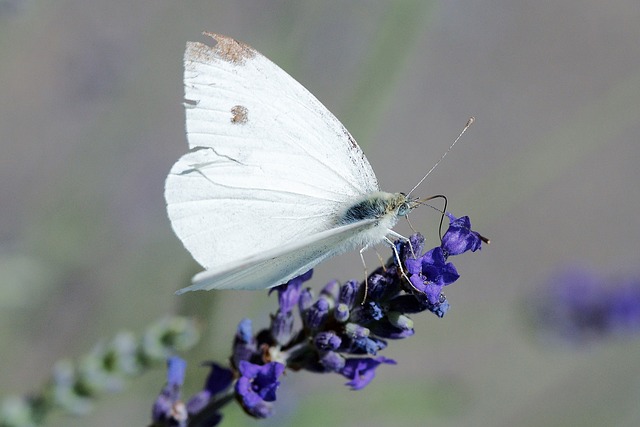
As I researched solutions, row covers were frequently recommended. If I had a different garden set up that’s what I would have used. But my garden has grown and evolved over time in a rather hodge podge fashion! Even the raised beds, being made from scrap wood, are not all the same size and none of my rows extend more than 7 feet. I was hesitant to invest in row covers only to have to cut them up in shorth sections. So I decided to make covers myself.
My husband helped me to construct two frames to sit over two of the raised beds where I planted brassicas. We used scrap lumber to make a rectangle and attached legs. Each of the two frames was measured to fit a specific bed.
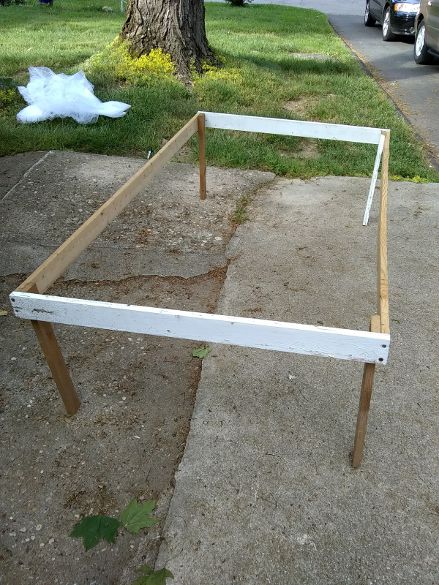
Dressing Up The Frames
My daughter helped me arrange tulle over the frames. We anchored it in place with a staple gun. On the first frame, the tulle just barely met on one side, so I sewed it together. On the second frame, the tulle gapped even more (since we weren’t working with uniformly sized tulle or frames). In this case, we used additional tulle to overlap the gap by two feet on each side of it.
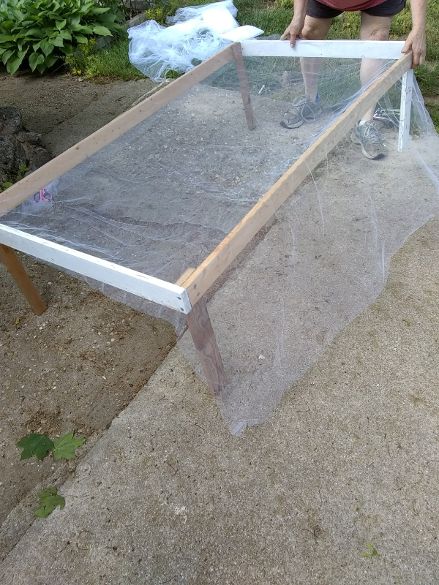
Arranging tulle on top of frame. 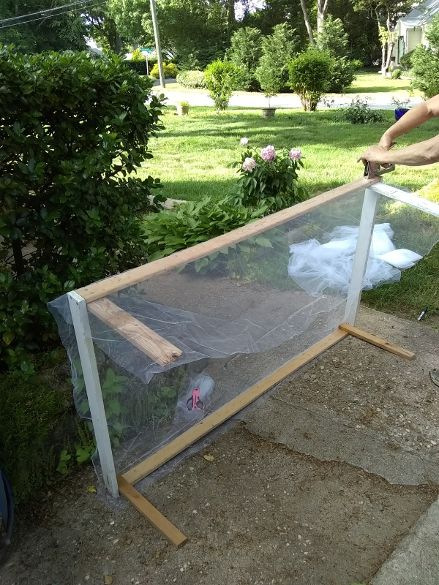
Attaching tulle with a staple gun. 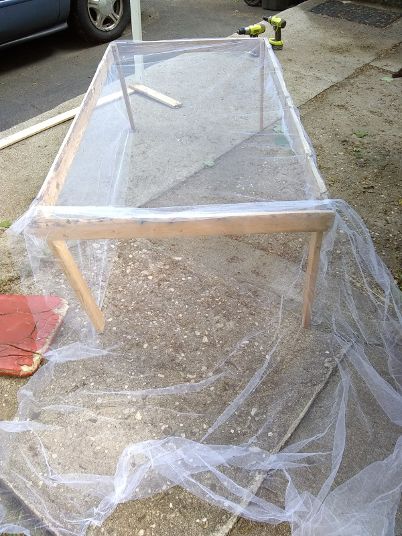
Arranging the tulle on the sides and ends of the frame. 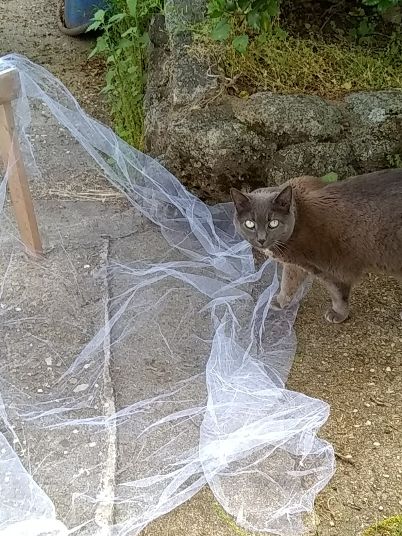
Missy thinks she’s helping! 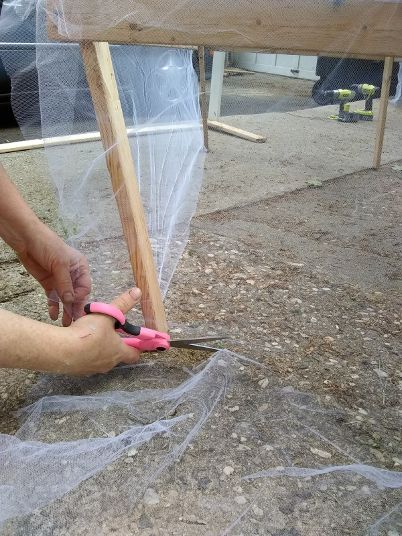
Trimming the excess tulle. 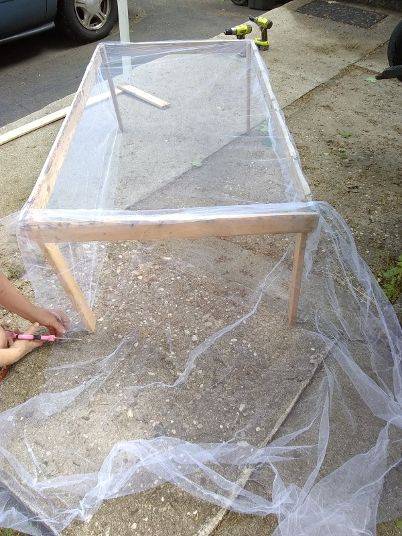
And more trimming.
Initially, I planned for the tulle to extend down the legs of the frame to the botom. I’m glad I left some extra to be tucked into the garden bed or held in place with a rock. If you decide to make a tulle covered frame, I recommend leaving even more tulle at the bottom to be held in place with a stick or rock.
Related Articles: Saving Water in the Garden, The State of My Garden and How To Compost.
My kale plants were already showing some signs of damage. Before placing the frames over the beds, I tried to wipe off any insects – though there was no way to be sure I got them all. Now, time will tell how well this method works. But I have high hopes! And I will report back on the level of succes I have.
The Finished Product!
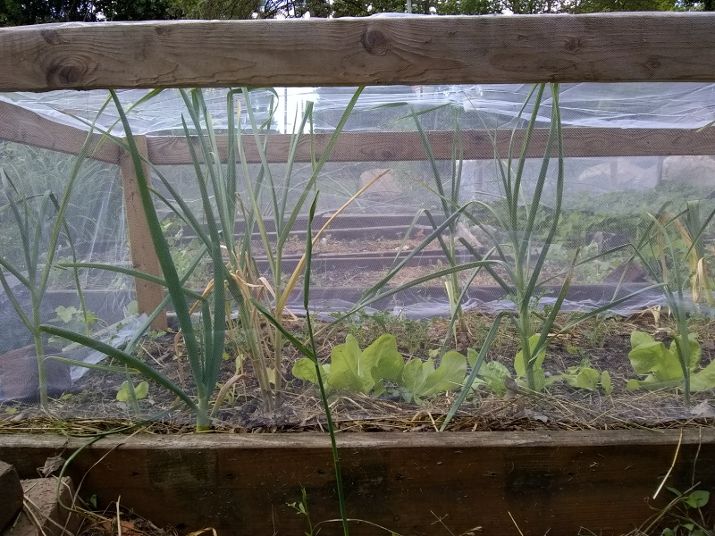
Close up side view of tulle over garden bed. 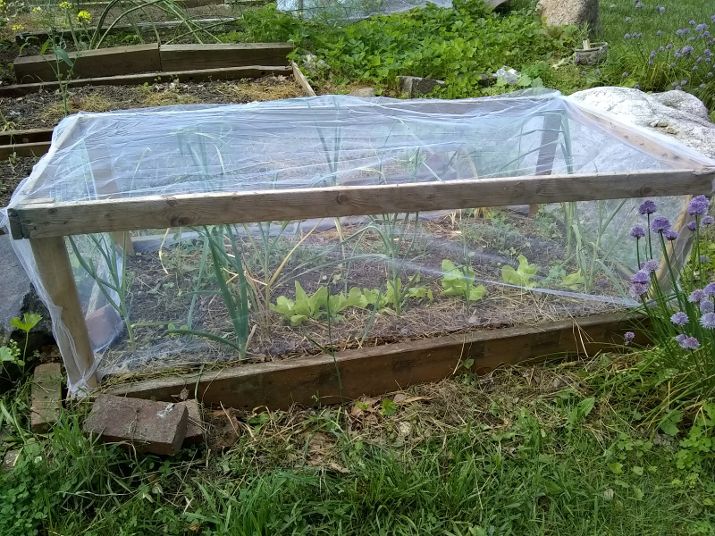
The finished tulle frame on the garden bed. 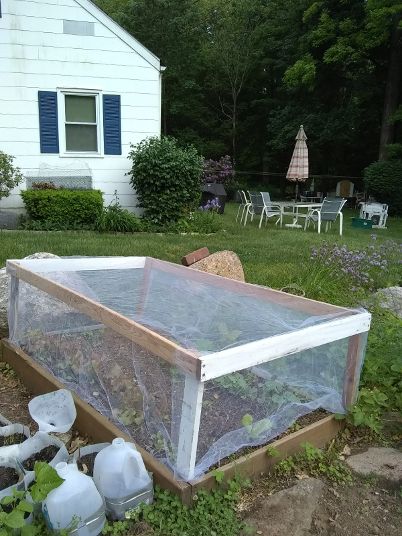
Finished tulle frame on kale and cabbage bed. 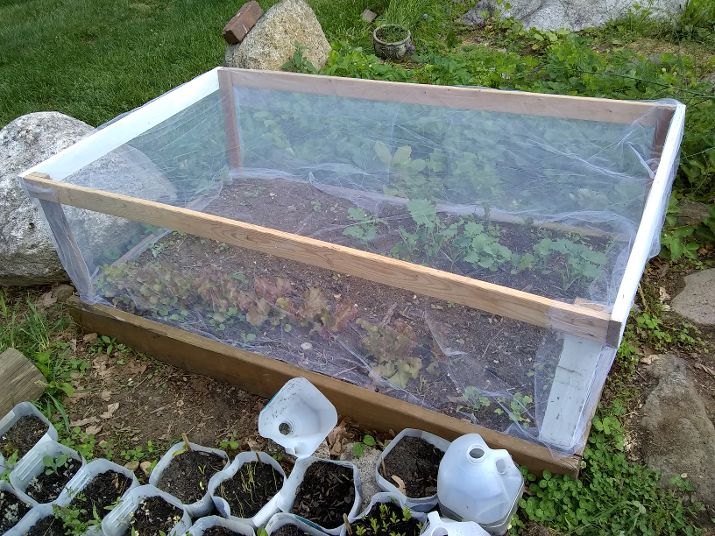
Protecting the garden from insect damage with tulle cover.
As a bonus, I can repurpose these frames for colder months with clear plastic to create custom fit cold frames. I thought about making more frames for additional beds but was concerned about storing them, but if I redo them as cold frames, they will simply spend the winter in place in the garden. And the plastic will protect the wood. Win-win!

Please share any questions or comments below. Happy Gardening!
Pingback: Easy DIY Chair Reupholstering | My Frugal Nature
Pingback: Beautiful Bounty: Snow Peas | My Frugal Nature